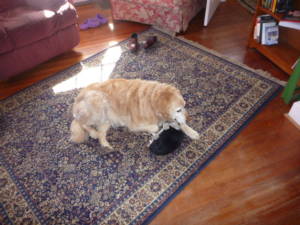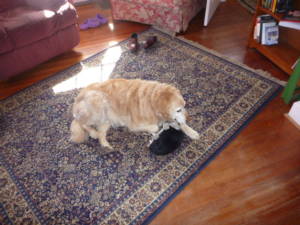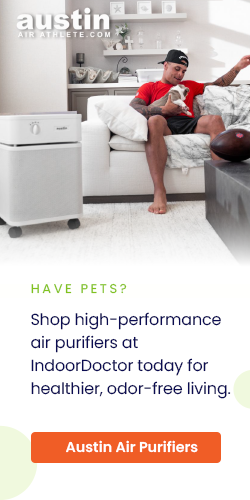Most pet owners deal with pet odors in their home at one time or another. Sometimes, the pet itself is the source of the odor. Other times it’s soiled carpets, cages or beds that are the problem. Even if you don’t own a pet, odors from the pet of a previous owner or tenant can affect your Indoor Air Quality months or even years later.

Pet odors generally fall into two categories:
Pet body odors: Odors from the body of the pet itself
Habitat odors: Odors caused by the pet living in your home
What to do about pet odors:
A few simple steps will help keep your home smelling fresh and help keep your pet healthier as well.
1. Control the source of the odor. Find and quickly clean any soiled areas in the home, including carpets, upholstery, floors and walls. Use paper towels to soak up moisture in soiled areas, then sprinkle baking soda on the affected area. Keep cages clean by establishing a daily routine of inspecting and removing sources of odor.
2. Improve ventilation. Adding outdoor air to the indoor environment can reduce the overall level of odors from all sources. In addition to opening doors and windows, use exhaust fans and consider whole-house ventilation systems if needed.
3. Use a high-performance air cleaner. A high-performance air cleaner with activated carbon and other media for gas and odor filtration will help keep the air smelling fresh. The IQAir HealthPro Plus (www.iqair.com) or the HealthMate Plus from Austin Air (www.autinair.com) are great choices for all types of pet odors. We offer our customers a 10% discount off the internet price.
4. Keep pets clean. From gerbils to German Shepherds, all pets benefit from grooming and bathing. Brushing helps remove dirt, lessen airborne dander and distribute skin oils. Check ears regularly for infections, and keep pets’ teeth clean with a special toothbrush and toothpaste.
5. Wash pet bedding often. A mild detergent without dyes will work best. Also, add a cup of baking soda to the wash water to neutralize odors. After washing your pet’s laundry, run a cycle of hot water with bleach before running the next load.
6. Control litter box odors. The key to controlling litter box odors is keeping the litter box clean. Scoop out contents every day or, even better, twice a day. Change litter often. Scrub the box clean whenever you change the litter. A general rule of thumb is one litter box per cat in your home.
7. Use a high-performance vacuum. Keeping your home clean is essential to controlling odors, and a high-quality vacuum will help. Many vacuum cleaners simply exhaust odors and pet dander right back into the room. Choose a high-quality vacuum with a HEPA filter.
By addressing odor issues early and by taking these few simple steps to keep pets and their environment healthy, everyone benefits. For more information on pet care and odor-free living, visit The Humane Society at www.humanesociety.org.






